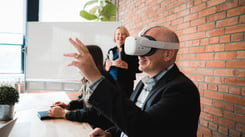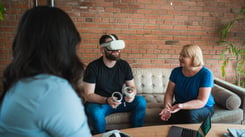Sustainability in design and architecture is more than just a trend. Many industries are examining the future of their businesses and how they can continue to meet client needs but improve the sustainability of their methods. This includes examining what materials are being used, transportation, and commuting efforts. Several industries, including design, are considering VR as a solution to some of these issues. VR for architecture can help promote sustainability in architecture by offering a digital solution to some of the most pressing issues that affect sustainability concerns for businesses and their clients.
In this article, we will discuss the importance of sustainability within your design or architecture practice and how VR solutions like Yulio can help you and your organization promote sustainability within your day-to-day practices. We hope that you will learn something new and see some new potential for changes that will help create a sustainable future for your business.
Sustainability and the World Today
When we talk about sustainability in business today, we mean more than just the ability to maintain and successful business relationships and drive your success. Today, sustainability is about the preservation of natural resources and maintaining an ecological balance between your business and the environment. This means avoiding the use of single-use materials or non-renewable resources. It’s about making choices that are better for the environment and that generally ensure that business can continue well into the future with these practices.
The reason that sustainability is so important today is for the same reasons that environmentalism and carbon emissions reductions have become hot topics in recent years. We’ve seen the effects of pollution on waste on our environment. Governments and industries alike are making efforts to reduce emissions and promote sustainability. It is these choices in these larger industries that will make the most impact and create visible change.
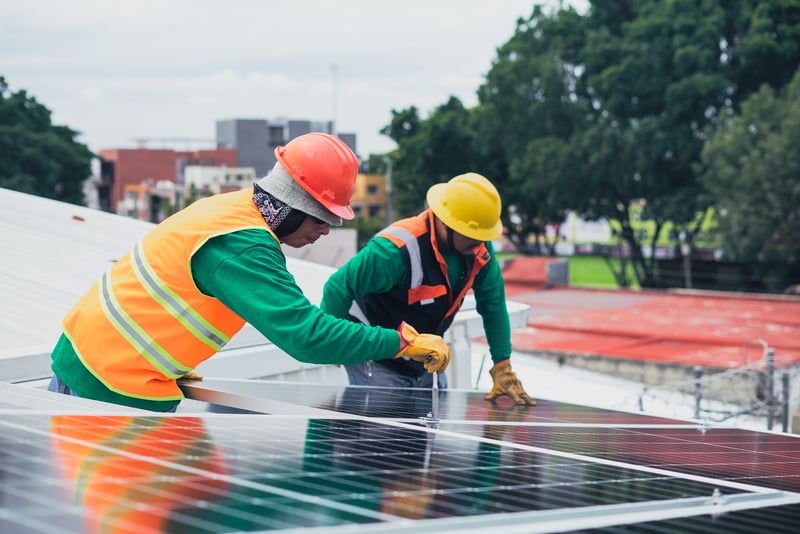
Sustainability efforts are being made across all industries
While the impact on the environment is the main purpose for promoting sustainability within your design practice, it has also become apparent that many consumers also prefer to do business with industries that are making efforts in sustainability. They want to feel that by choosing to work with a company that is environmentally conscious, they too are being sustainable in their actions. This study from EY Canada states that sustainability is becoming more of a priority for consumers and that 69% are relying on businesses to make those changes. If you start to make these choices, you can ensure your clients that they are investing in a business that is future-thinking and conscious of the world around them.
VR Solutions for Sustainability
We consider VR experiences to be the right solution for the challenges of sharing your vision - whether it’s allowing clients to walk through your floorplan, collaborating with your team to solve architectural challenges, or reducing the environmental impact of traveling to meetings, shipping samples and more.
VR offers up some solutions that can increase sustainability whether you are looking to reduce your environmental impact further or begin a program of sustainability as a pillar of your practice that you can communicate to clients. Below we will highlight some of these areas.
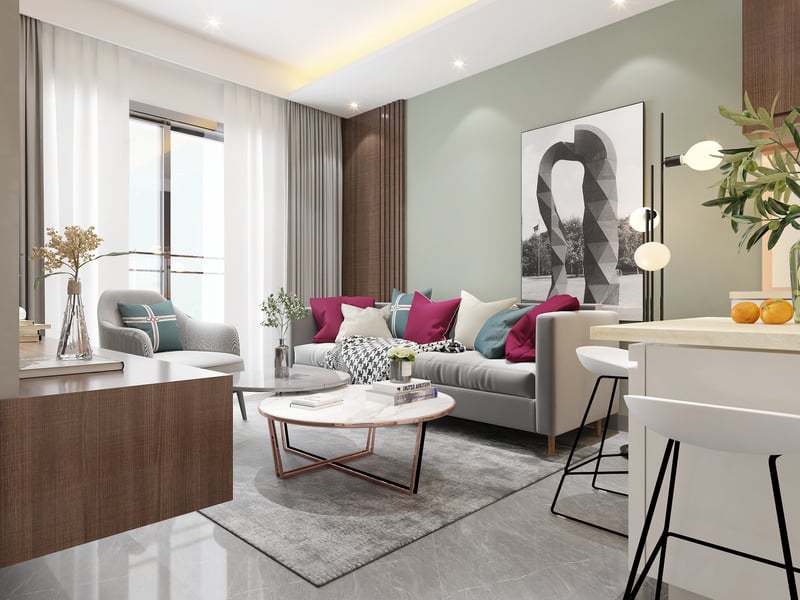
Virtual visualizations have become commonplace in architecture and design. VR is the next step.
Materials used for physical mockups/models
A traditional visualization method for many architecture firms or design studios is the creation of small-scale models/replicas of their designs. These replicas are created with several types of materials depending on the firm. Often, they are single-use, created for a specific pitch or project, and then thrown away.
The good news is that often these models are built with somewhat sustainable materials, like paper and wood, and they can often be recycled or reused. However, sometimes, plastics can come into play. 3D printers can be used for model creation and the materials used are tricky to recycle or sometimes not recyclable at all. But thanks to their convenience they have gained a lot of popularity.
VR can also replace traditional mockup costs, where design firms may build sample seating areas or desk units, only to discover the client wishes to go in a different direction. By using VR to first narrow down client choices, your practice can likely do fewer mockups and save significant wasted materials and transportation.
By using a digital model of your design that you can explore from a first-person view in VR you immediately cut down on your firm’s use of materials used in the creation of models. No extra materials are required, and one could argue that the impact of viewing your model from a virtual first-person perspective is greater than viewing a small model. VR is the closest thing to building your design to scale and experiencing it in person. You’ll be able to wow your clients and save costs and usage of extra materials.
Reduce last-minute costs and material waste
We’ve all heard stories of a client visiting a construction site or seeing the work in progress and when they see everything in person, they realize that something isn’t quite what they thought. Maybe it’s the height of an archway, the lights being used, or the dimensions of a doorway. They will be upset and changes may have to be made in the middle of construction. This can lead to extra costs and possibly the waste of certain building materials. Not to mention friction with a client.
These occurrences are often caused by a client not having the design background to understand some of the more traditional visualization methods used in architecture. It can also just be hard to visualize something based on models and design specs. By having a VR solution for presenting designs, you can communicate a design to anyone, no matter their design background, reducing any last-minute confusion that could lead to costly and unsustainable material wastage.
Reduce commutes and transportation
Any business, not just design, will have some form of commute or transportation involved. This could be workers coming to the office, clients coming in for presentations, flying to meet decision-makers, or visiting showrooms or studios to see certain designs or products in person. Travelling isn’t something that just takes up time, it can impact the environment heavily. Coming up with digital or remote solutions is a great way to reduce the impact of transportation on your environment.
Yulio has several remote collaboration tools that allow you to present effectively without requiring someone to travel in. It also gives you the ability to render products such as furniture, lighting fixtures, and more in your design, which could save you from traveling to showrooms or studios to see products in person.
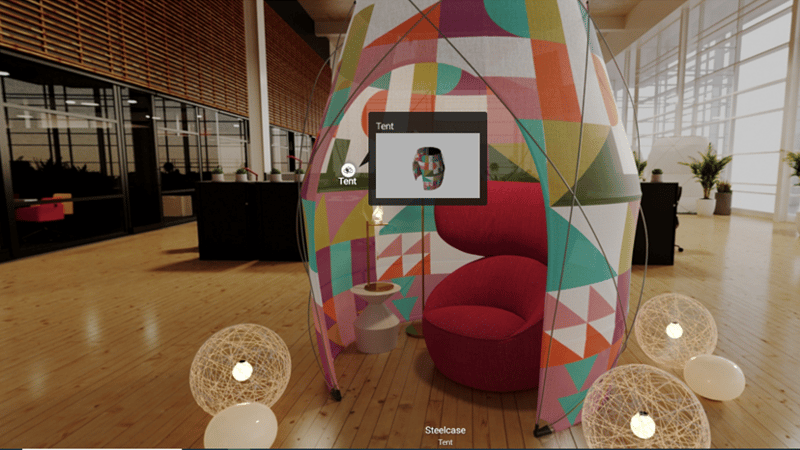
Virtual Showrooms or renderings of products can minimize the need to travel to see them in person
Start making changes
The importance of sustainability for your business is only growing as we move forward. Using VR, you can start implementing changes within your organization that can start having an immediate impact on your sustainability. The potential for a VR solution within your business that will help improve not just sustainability, but also efficiency and client relations is clear and cost-effective.
If you’re looking for a VR platform that can help you showcase your architecture project sustainably in VR, sign up for our free 30-day free trial. Get full access to all our project enhancement features to take your presentations to the next level. Or if you want to learn more about Yulio, check out our product tour to get all the details on our robust VR platform.





